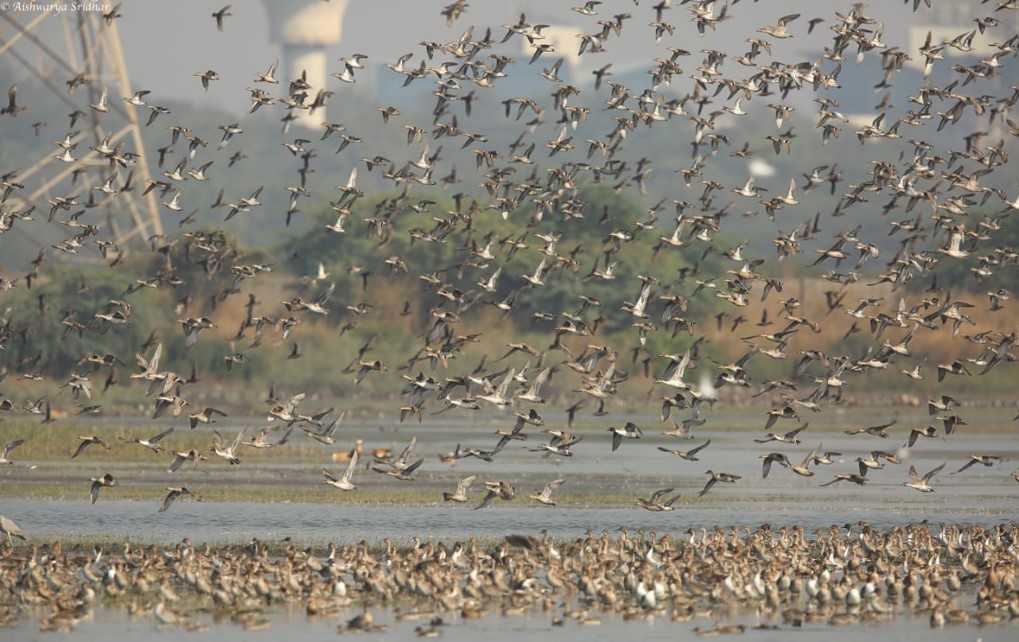#Wakeupforwetlands : 1st ever Digital Agitation to Save Wetlands in Mumbai Region

20 May 2021
MUMBAI: In a run-up for the World Wetlands Day, environmentalists embarked on the first ever green digital agitation with a series of virtual activities titled #WakeUpForWetlands focusing on the all-round destruction of urban sponges in Mumbai Metropolitan Region (MMR).
The destruction of wetlands is a concern because they are some of the most productive habitats on the planet. They often support high concentrations of animals—including mammals, birds, fish and invertebrates—and serve as nurseries for many of these species, NGO NatConnect Foundation said quoting World Wildlife.
WWF, governments and other organizations have pursued efforts to conserve and protect wetlands for more than 40 years through the Ramsar Convention, the only international treaty devoted to a single ecosystem type. The Convention resolved to observe February 2 as the World Wetlands Day.
MMR has been rapidly losing its wetlands and it has already started causing unseasonal floods with water finding its own course, said B N Kumar, director of NatConnect Foundation, who floated an online petition asking people to wake up to the destruction.
NatConnect, which enjoys about 10,000 supporters for its ongoing campaign focusing on conservation of nature, began to mobilise further support to the cause of wetlands through a series of tweets, posting of photographs of the destruction .
“Since physical activities are limited due to the pandemic, we have chosen the online route to raise our collective voice to stir up the conscience of the power that be and the people in general,” Kumar said.
The burial of wetlands such as Panje, Belpada, Bhendkhal and Sawahkhar in Uran has been impacting lives and livelihoods with the original habitants the fishing community losing their source of survival and the constitutional right to practice their trade, Kumar said.
Supporting the campaign, Nandakumar Pawar, director Shri Ekvira Aai Pratishtan said, wetlands are supposed to be urban sponges and they are nature’s gift to mankind as a flood control mechanism. In their absence, water finds its own course. This is commonsense. “But our urban planners ignore this and the result is flooding of Uran villages and paddy fields with saline water,” Pawar pointed out.
“The disappearance of wetlands (along with mangroves) is having disastrous effect on the fishing community who are losing their source of survival by the day. This development is causing destruction of lives and livelihoods. Hence this digital agitation,” NatConnect said in its online campaign targeting the policy makers, the implementors and urban planners asking them to spare our wetlands from turning into concrete jungles, Protect some wetlands such as Panje and Talawe as Bird Sanctuaries, Maintain floodplains under the River Regulatory Zone on the banks of all rivers – both monsoon and perennial - and above all, learn from experience of floods and allow the people to live with dignity – their constitutionally guaranteed right,
Wetlands also support the cultivation of rice, a staple in the diet of half the world’s population. And they provide a range of ecosystem services that benefit humanity, including water filtration, storm protection, flood control and recreation. Without wetlands, cities have to spend more money to treat water for their citizens, floods are more devastating to nearby communities, storm surges from hurricanes can penetrate farther inland, animals are displaced or die out, and food supplies are disrupted, along with livelihoods, WWF says.
“Mumbai Metropolitan Region has been blessed with lots of Wetlands. You will be surprised to know that in Raigad district alone, the administration has identified 130 wetlands. Wetlands International South Asia (WISA) says Mumbai lost 71% of its wetlands between 1970 and 2014,” NatConnect said
Outside the island city, MMR is still blessed with some wetlands which are under heavy attack. It's not any private landshark who is devouring the wetlands, but the faulty planning and urbanization with scant respect for the environment that is causing the irreparable loss.
CIDCO, the city planner, has allotted mangrove zones and wetlands to infrastructure companies such as NMSEZ and JNPT who are just burying with truckloads of debris and earth.
“As we were protesting, over 500 acres of wetland at Dastan (Jasai) has been turned into a dust bowl with a landfill done on a war-footing by JNPT under the guise of development under 12.5% compensation scheme for the project affected people. The project affected ought to have been given compensation from the already developed land and not with fresh destruction of nature,” Kumar said.
Story credits to B N Kumar Editor & Director NatConnect Foundation.
Photo credits: Aishwarya Sridhar


